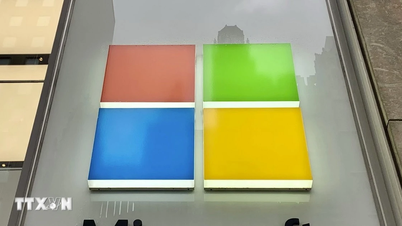OpenAI charges Sora users
OpenAI has officially launched a paid model for its AI video creation app – Sora. Users can pay $4 to create around 10 additional videos per day beyond the free limit.
Currently, users are still allowed to create up to 30 free videos per day. However, OpenAI said that number will decrease in the future due to limitations in computing resources (GPU).
Bill Peebles, who leads the Sora project, said demand from “power users” far exceeded initial expectations. Selling video credits allows them to use more if they are willing to pay.

Users will have to pay to use AI Sora to create videos. (Source: CNET)
Pro users can create up to 100 videos per day, but this number can vary depending on the video profile they choose. More “expensive” profiles will consume more resources.
A day earlier, OpenAI introduced a “cameo” feature – allowing users to create videos featuring pets or objects. However, the company Cameo (famous for personalized videos from celebrities) sued OpenAI for using the same name.
Nexperia's export ban lifted in the Netherlands
The Dutch government has announced that it will allow Nexperia to continue exporting chips from the plant. The company called this a “positive step” and said it would fully comply with current regulations.
Nexperia's representative in the Netherlands said they "welcomed" the new decision and pledged to continue working closely with the Government to ensure transparent, safe and law-abiding operations.

The Nexperia company logo at a building in Europe. (Source: Reuters)
The lifting of the ban is seen as a positive sign amid escalating technology tensions between China and the West, and it also helps ease pressure on chip supply chains that have been disrupted by export controls.
Previously, Nexperia, a Chinese-owned chipmaker, was banned by the Dutch government from exporting products from its Nijmegen factory due to national security concerns. This decision caused controversy because it affected the global semiconductor supply chain.
The first light-powered AI chip
Scientists at Tsinghua University (China) have developed an AI chip that uses light instead of electricity to process data. This chip is called OFE² (Optical Feature Extraction Engine) and reaches a processing speed of up to 12.5 GHz – the fastest ever recorded in the field of optical computing.

The new optical computer chip is capable of processing data in parallel at extremely high speeds and with very low latency. (Source: H. Chen, Tsinghua University)
OFE² uses optical circuits to split the input data into parallel light channels. These light rays pass through a microscopic diffraction plate on the chip, performing matrix-vector multiplication by interfering light waves. A calculation is completed in just 250.5 picoseconds.
Compared to traditional electronic chips, OFE² consumes much less energy. Scientists believe that optical computing will usher in the era of real-time, energy-efficient AI.
Source: https://vtcnews.vn/cong-nghe-3-11-sora-het-mien-phi-trung-quoc-ra-mat-chip-ai-chay-bang-anh-sang-ar984739.html


![[Photo] The road connecting Dong Nai with Ho Chi Minh City is still unfinished after 5 years of construction.](https://vphoto.vietnam.vn/thumb/1200x675/vietnam/resource/IMAGE/2025/11/04/1762241675985_ndo_br_dji-20251104104418-0635-d-resize-1295-jpg.webp)
![[Photo] Ho Chi Minh City Youth Take Action for a Cleaner Environment](https://vphoto.vietnam.vn/thumb/1200x675/vietnam/resource/IMAGE/2025/11/04/1762233574890_550816358-1108586934787014-6430522970717297480-n-1-jpg.webp)

![[Photo] Ca Mau "struggling" to cope with the highest tide of the year, forecast to exceed alert level 3](https://vphoto.vietnam.vn/thumb/1200x675/vietnam/resource/IMAGE/2025/11/04/1762235371445_ndo_br_trieu-cuong-2-6486-jpg.webp)
![[Photo] Panorama of the Patriotic Emulation Congress of Nhan Dan Newspaper for the period 2025-2030](https://vphoto.vietnam.vn/thumb/1200x675/vietnam/resource/IMAGE/2025/11/04/1762252775462_ndo_br_dhthiduayeuncbaond-6125-jpg.webp)

















![[INFOGRAPHIC] HP OmniBook 7 Aero 13”, smart security](https://vphoto.vietnam.vn/thumb/402x226/vietnam/resource/IMAGE/2025/11/04/1762263280437_info-hp-02-jpg.webp)

















































































Comment (0)